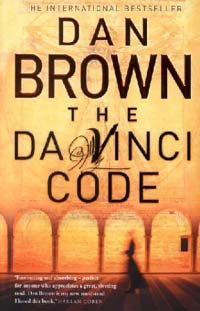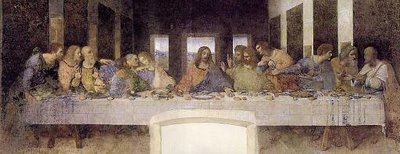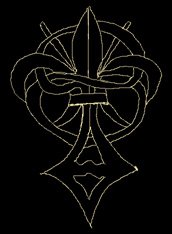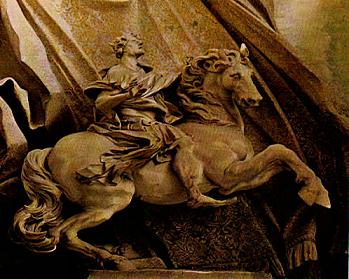
According to TDVC...
"The Bible is a product of man,... not of God." (Page 231)
"The New Testament is false testimony." (Page 345)
TDVC - EXPOSED!!!
What the Bible has got to say for itself:
All Scripture is inspired by God and profitable
for teaching, for reproof, for correction,
for training in righteousness;
so that the man of God may be adequate,
equipped for every good work.
~ 2 Timothy 3:16-17 ~
The Bible is not the product of man but is rather God- inspired. Inspiration does not mean the biblical writer just felt enthusiastic, like the composer of the "Star Spangled Banner." Nor does it mean the writings are necessarily inspiring to read, like an uplifting poem. The biblical Greek word for inspiration literally means "God-breathed." Because Scripture is breathed out by God - because it originates from Him - it is true and inerrant.
Biblical inspiration may be defined as God's superintending of the human authors so that, using their own individual personalities - and even their writing styles - they composed and recorded without error His revelation to humankind in the words of the original autographs.
In other words, the original documents of the Bible were written by men, who, though permitted to exercise their own personalities and literary talents, wrote under the control and guidance of the Holy Spirit, the result being a perfect and errorless recording of the exact message God desired to give to man.
The writers of Scripture were not mere writing machines. God did not use them like keys on a typewriter to mechanically reproduce His message. Nor did He dictate the words, page by page. The biblical evidence makes it clear that each writer had a style of his own. (Isaiah had a powerful literary style; Jeremiah had a mournful tone; Luke's style had medical overtones; and John was very simple in his approach.) The Holy Spirit infallibly worked through each of these writers, through their individual styles, to inerrantly communicate His message to humankind.
For prophecy never had its origin in the will of man,
but men spoke from God as they were
carried along by the Holy Spirit.
~ 2 Peter 1:21 ~
The phrase "carried along" in this verse literally means "forcefully borne along." Even though human beings were used in the process of writing down God's Word, they were all literally "borne along" by the Holy Spirit. The human wills of the authors were not the originators of God's message. God did not permit the will of sinful human beings to misdirect or erroneously record His message. Rather, God moved and the prophet mouthed these truths; God revealed and man recorded His word.
Interestingly, the Greek word for "carried along" in 2 Peter 1:21 is the same as that found in Acts 27:15-17. In this passage the experienced sailors could not navigate the ship because the wind was so strong. The ship was being driven, directed, and carried along by the wind.
This is similar to the Spirit's driving, directing, and carrying the human authors of the Bible as He wished. The word is a strong one, indicating the Spirit's complete superintendence of the human authors. Yet, just as the sailors were active on the ship (though the wind, not the sailors, ultimately controlled the ship's movement), so the human authors were active in writing as the Spirit directed.
This is what we speak,
not in words taught us by human wisdom
but in words taught by the Spirit,
expressing spiritual truths in spiritual words.
~ 1 Corinthians 2:13 ~
In this passage Paul (who wrote over half the New Testament) affirmed that his words were authoritative because they were rooted not in fallible men but infallible God (the Holy Spirit). The Holy Spirit is the Spirit of truth who was promised to the apostles to teach and guide them into all the truth.
But when he, the Spirit of truth, comes,
he will guide you into all truth.
He will not speak on his own;
he will speak only what he hears,
and he will tell you what is yet to come.
~ John 16:13 ~
And we also thank God continually because,
when you received the word of God,
which you heard from us,
you accepted it not as the word of men,
but as it actually is, the word of God,
which is at work in you who believe.
~ 1 Thessalonians 2:13 ~
The reason why Paul's words were authoritative is that they were rooted in God, not in man. God used Paul as His instrument to communicate His word to man.
According to TDVC...
"The New Testament is based on fabrications." (Page 341)
TDVC - EXPOSED!!!
The New Testament is not made up of fairytales but is rather based on eyewitness testimony.
We did not follow cleverly invented stories
when we told you about the power
and coming of our Lord Jesus Christ,
but we were eyewitnesses of his majesty.
~ 2 Peter 1:16 ~
That which was from the beginning,
which we have heard,
which we have seen with our eyes,
which we have looked at
and our hands have touched -
this we proclaim concerning the Word of life."
~ 1 John 1:1 ~
So convinced were these and other eyewitnesses that they ended up giving their lives in defense of what they knew to be true.
According to TDVC...
"The Bible... has evolved through countless translations, additions, and revisions. History has never had a definitive version of the book." (Page 231)
TDVC - EXPOSED!!!
Dan Brown can only argue this way by ignoring well-established facts.
First, while there have been numerous translations of the Bible into a variety of languages, each such translation utilizes the same basic set of Hebrew and Greek manuscript copies of the original writings of the Bible. There are more than 5,000 partial and complete manuscript copies of the New Testament. These manuscript copies are very ancient and they are available for inspection now. Following are some highlights:
* The Chester Beatty papyrus (P45) dates to the 3rd century A.D., and contains the four Gospels and the Book of Acts (chapters 4-17). (P = papyrus.)
* The Chester Beatty papyrus (P46) dates to about A.D. 200, and contains ten Pauline epistles (all but the Pastorals) and the Book of Hebrews.
* The Chester Beatty papyrus (P47) dates to the 3rd century A.D., and contains Revelation 9:10-17:2.
* The Bodmer Papyrus (P66) dates to about A.D. 200, and contains the Gospel of John.
* The Bodmer Papyrus (P75) dates to the early 3rd century, and contains Luke and John.
* The Sinaiticus uncial manuscript dates to the 4th century, and contains the entire New Testament.
* The Vaticanus uncial manuscript dates to the 4th century, and contains most of the New Testament except Hebrews 9:14ff., the Pastoral Epistles, Philemon, and Revelation.
* The Washingtonianus uncial manuscript dates to the early 5th century, and contains the Gospels.
* The Alexandrinus uncial manuscript dates to the 5th century, and contains most of the New Testament.
* The Ephraemi Rescriptus uncial manuscript dates to the 5th century, and contains portions of every book except 2 Thessalonians and 2 John.
* The Bezae/Cantabrigiensis uncial manuscript dates to the 5th century, and contains the Gospels and Acts.
* The Claromontanus uncial manuscript dates to the 6th century and contains the Pauline epistles and Hebrews.
* The Itala version (versions were prepared for missionary purposes) dates to the 3rd century.
* The Vulgate version dates to the 4th century and later.
* The Syriac version dates to the 2nd to 6th centuries.
* The Coptic version dates to the 3rd and 4th centuries.
* The Armenian version dates to the 5th century.
* The Georgian version dates to the 5th century.
There are also some 86,000 quotations of the New Testament from the early church fathers and several thousand Lectionaries (church-service books containing Scripture quotations used in the early centuries of Christianity).
In fact, there are enough quotations from the early church fathers that even if we did not have a single manuscript copy of the Bible, scholars could still reconstruct all but 11 verses of the entire New Testament from material written within 150 to 200 years from the time of Christ.
What about the variants that exist among the biblical manuscripts?
It is true to say that in the thousands of manuscript copies we possess of the New Testament, scholars have discovered that there are some 200,000 "variants." This may seem like a staggering figure to the uninformed mind, but to people who study the issue, the numbers of variants are not so damning as it may initially appear. Indeed, a look at the hard evidence shows that the New Testament manuscripts are amazingly accurate and trustworthy.
To begin, I must emphasize that out of these 200,000 variants, over 99% hold virtually no significance whatsoever. Many of these variants simply involve a missing letter in a word; some involve reversing the order of two words (such as "Christ Jesus" instead of "Jesus Christ"); some may involve the absence of one or more insignificant words. When all the facts are put on the table, only about 40 of the variants have any real significance - and even then, no doctrine of the Christian faith or any moral commandment is effected by them. For more than 99% of the cases the original text can be reconstructed to a practical certainty.
By practicing the science of textual criticism - comparing all the available manuscripts with each other - we can come to an assurance regarding what the original document must have said.
Let us suppose we have 5 manuscript copies of an original document that no longer exists. Each of the manuscript copies is different. Our goal is to compare the manuscript copies and ascertain what the original must have said. Here are the five copies:
Manuscript #1: Jesus Christ is the Savior of the whole world.
Manuscript #2: Christ Jesus is the Savior of the whole world.
Manuscript #3: Jesus Christ the Savior of the whole worl.
Manuscript #4: Jesus is Savior of the whle world.
Manuscript #5: Jesus Christ is the Savor of the wrld.
Could you, by comparing the manuscript copies, ascertain what the original document said with a high degree of certainty that you are correct? Of course you could.
This illustration may be extremely simplistic, but a great majority of the 200,000 variants are solved by the above methodology. By comparing the various manuscripts, most of which contain relatively minor differences like the above, it becomes fairly clear what the original must have said.
Let's talk about the Dead Sea Scrolls. In these scrolls discovered at Qumran in 1947, we have Old Testament manuscripts that date about a thousand years earlier (150 B.C.) than the other Old Testament manuscripts previously in our possession (which dated to A.D. 980). The significant thing is that when one compares the two sets of manuscripts, it is clear that they are essentially the same, with very few changes. The fact that manuscripts separated by a thousand years are essentially the same indicates the incredible accuracy of the Old Testament's manuscript transmission.
The copy of the Book of Isaiah discovered at Qumran illustrates this accuracy. Dr. Gleason Archer, who personally examined both the A.D. 980 and 150 B.C. copies of Isaiah, comments:
"Even though the two copies of Isaiah discovered in Qumran Cave 1 near the Dead Sea in 1947 were a thousand years earlier than the oldest dated manuscript previously known (A.D. 980), they proved to be word for word identical with our standard Hebrew Bible in more than 95% of the text. The 5% of variation consisted chiefly of obvious slips of the pen and variations in spelling."
The Dead Sea Scrolls prove that the copyists of biblical manuscripts took great care in going about their work. These copyists knew they were duplicating God's Word. Hence they went to incredible lengths to insure that no error crept into their work. The scribes carefully counted every line, word, syllable, and letter to guarantee accuracy.
Scholar L. Bevan Jones writes:
"The Massoretes... numbered the verses, words, and letters of every book. They calculated the middle word and the middle letter of each. They enumerated verses which contained all the letters of the alphabet, or a certain number of them; and so on. These trivialities, as we might rightly consider them, had yet the effect of securing minute attention to the precise transmission of the text; and they are but an excessive manifestation of a respect for the sacred Scriptures which in itself deserves nothing but praise. The Massoretes were indeed anxious that not one jot or tittle - not one smallest letter nor one tiny part of a letter - of the Law should pass away or be lost."
Regarding Brown's claim that the New Testament has gone through numerous revisions, as if changes have been made century by century:
* Within the first few centuries of Christianity, there were thousands of copies of the Bible dispersed over a large part of the world. To successfully revise or make a change in the Bible, all these copies would have to be meticulously gathered (assuming people around the world would be willing to surrender them, an impossible-to-believe scenario), and then the changes made.
* Another scenario is that thousands of Bible-owning people from around the world met together and colluded to make the changes. But since most of these people were true believers, is it likely they would tamper with a book upon which they were basing their eternal salvation? Would such collusion even be physically possible?
* Within the first few centuries of Christianity, the Bible was translated into a number of languages. Are we to believe these various translations were identically altered all over the world so they would have a uniform revision?
* Scholar William J. Saal raises the point that if Christians corrupted the New Testament, wouldn't unflattering episodes about Christians have been removed from the New Testament (like Peter denying Christ three times, and the disciples scattering like a bunch of faithless cowards when Christ was arrested)? One would think so.
In my view, the almighty God who had the power and sovereign control to inspire the Scriptures in the first place is surely going to continue to exercise His power and sovereign control in the preservation of Scripture. Further, God's preservational work is illustrated in the very text of the Bible. By examining how Christ viewed the Old Testament (keeping in mind that Jesus did not have in His possession the original books penned by the Old Testament writers, but possessed only copies), we see that He had full confidence that the Scriptures He used had been faithfully preserved through the centuries.
Bible scholar Greg Bahnsen writes:
"Because Christ raised no doubts about the adequacy of the Scripture as His contemporaries knew them, we can safely assume that the first- century text of the Old Testament was a wholly adequate representation of the divine word originally given. Jesus regarded the extant copies of His day as so approximate to the originals in their message that He appealed to those copies as authoritative."
The respect Jesus and His apostles held for the extant Old Testament text is an expression of their confidence that God providentially preserved these copies and translations so that they were substantially identical with the inspired originals. We can deduce that the same is true regarding the New Testament and God's preservation of the entire Bible through history.
"I warn everyone who hears the words
of the prophecy of this book:
If anyone adds anything to them,
God will add to him the plagues described in this book.
And if anyone takes words away
from this book of prophecy,
God will take away from him his share
in the tree of life and in the holy city,
which are described in this book."
~ Revelation 22:18 -19 ~
The Jews were also given similar commands in the Old Testament.
"Do not add to what I command you
and do not subtract from it,
but keep the commands of the LORD your God
that I give you."
~ Deuteronomy 4:2 ~
"See that you do all I command you;
do not add to it or take away from it."
~ Deuteronomy 12:32 ~
"Every word of God is flawless;
he is a shield to those who take refuge in him.
Do not add to his words,
or he will rebuke you and prove you a liar."
~ Proverbs 30:5-6 ~
In view of such verses, one must ask how feasible it is to suggest that Bible-believing Christians would choose to corrupt and change God's Word? Such individuals would not only be damning themselves before God, but also misleading all their descendants (their children and their children's children) who would read the very Scriptures they corrupted. How likely is that?
 Truth to be told, I was excited at the prospect of reading this book as, being an avid reader, I have heard that it was supposedly “good reading material”. I read in it a single sitting. At the beginning, I thought it was quite a clever thriller. At the end, I sat down, thinking – a lot. It disturbs me why people would grab TDVC and let their beliefs waver without researching deeply into the book. I hope and pray that the article below (a compilation of sources that I have personally read through and summarized) will clear the air for those who read it. Happy thinking!
Truth to be told, I was excited at the prospect of reading this book as, being an avid reader, I have heard that it was supposedly “good reading material”. I read in it a single sitting. At the beginning, I thought it was quite a clever thriller. At the end, I sat down, thinking – a lot. It disturbs me why people would grab TDVC and let their beliefs waver without researching deeply into the book. I hope and pray that the article below (a compilation of sources that I have personally read through and summarized) will clear the air for those who read it. Happy thinking!




